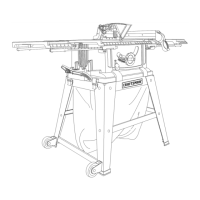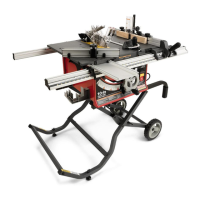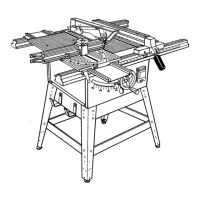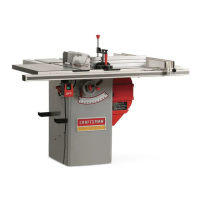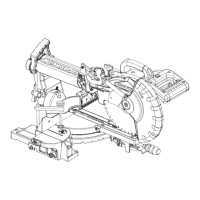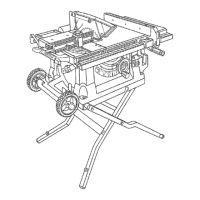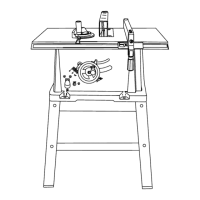,_k WARNING: To reduce the risk of injury, always
make sure the rip fence is parallel to the blade before
beginning any operation.
TO SET THE RIP FENCE SCALE INDICATOR TO
THE BLADE
See Figure 25.
Begin withthe blade at a zero angle (straight up),
m Unplug the saw.
• Loosen the rip fence by lifting the locking lever.
• Using a framing square, set the rip fence 2 in. from the
blade tip edge.
• Loosen the screw on the scale indicator.
• Tighten the screw end check the dimension and the rip
fence.
TO USE THE RIP FENCE
See Figure 26.
• Place the rear tip on the rear of the saw table and pull
slightly toward the front of the unit.
• Lower the front end of the rip fence onto the guide
surfaces on top of the front rail.
• Push the locking lever down to automatically align and
secure the fence.
Check for a smooth gliding action. If adjustments are
needed, see TOCheck the Alignment of the Rip Fence
to the Blade in the Adjustment section of this manual.
TO USE THE MITER GAUGE
See Figure 27.
The miter gauge provides greater accuracy in angled cuts,
For very close tolerances, test cuts are recommended.
There are two miter gauge channels, one on either side
of the blade. When making a 90° cross cut, you can use
either miter gauge channel. When making a beveled cross
cut (the blade tilted in relation to the table) the miter gauge
should be located in the slot on the dght SOthat the blade
is tilted away from the miter gauge and your hands.
The miter gauge can be turned 60" to the right or left.
• Loosen the lock knob,
• With the miter gauge in the miter gauge slot. rotate the
gauge until the desired angle is reached on the scale.
• Retighten the lock knob.
RIP
BLADE
2irl.
SCALE MARK
INDICATOR
RIPFENCE
SAW
TABLE
REARLIP
MITER_
GAUGE_
SCALE
FRONT
RAIL
LOCKING
LEVER
Fig. 25
LEVER
FTg,26
LOCK
KNOB
/
)
Fig. 27
24
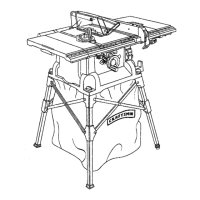
